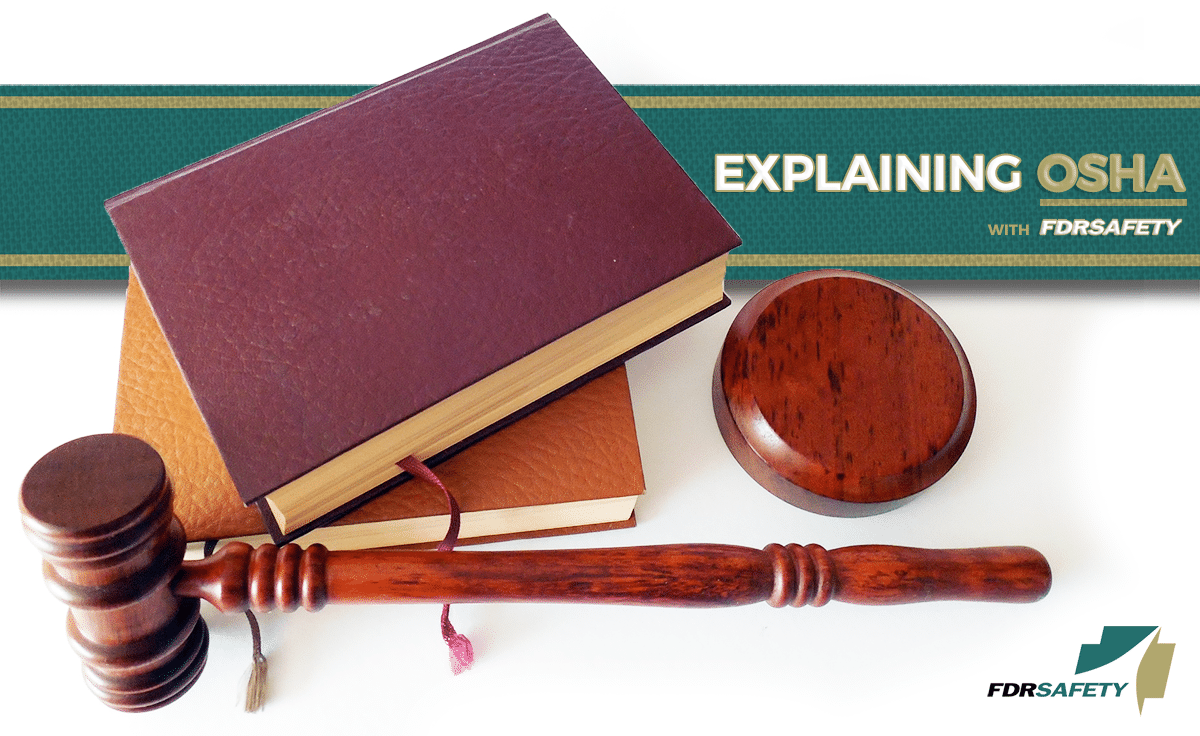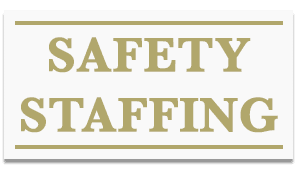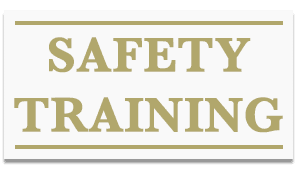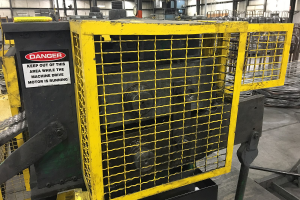OSHA’s “general duty” clause – often used and frequently misunderstood

Even though the OSHA general duty clause is a long-standing part of the Occupational Safety and Health Act, its proper use is frequently misunderstood, sometimes even by OSHA itself. As a result employers can be surprised by a general duty citation.
Here’s what you need to know
The OSHA General Duty Clause, Section 5(a)(1) of the Occupational Safety and Health Act, requires that each employer furnish to each of its employees a workplace that is free from recognized hazards that are causing or likely to cause death or serious physical harm.
The general duty provisions can be used by OSHA only where there is no standard that applies to the hazard and the employer’s own employees are exposed to the alleged hazard. Each of the 26 states and 2 territories, who operate OSHA-approved workplace safety and health programs, have adopted this, or an equally effective, provision.
All the following elements are necessary for OSHA to prove a general duty clause violation:
1) The employer failed to keep the workplace free of a hazard to which its employees were exposed.
2) The hazard was recognized by the employer.
3) The hazard was causing, or was likely to cause, death or serious physical harm (serious violation).
4) There was a feasible and useful method to correct the hazard.
OSHA sometimes gets it wrong!
In many situations, OSHA’s 5(a)(1) citations (General Duty Clause) have incorrectly alleged that a violation was the failure to implement certain precautions, corrective measures or other abatement steps rather than the failure to prevent or remove a particular hazard.
The occurrence of an accident does not necessarily mean that an employer has violated Section 5(a)(1), although the accident may be evidence of a hazard. OSHA has instructed its compliance officers that accident facts may be relevant and must be gathered, but a 5(a)(1) citation must address the hazard in the workplace, not the particular facts of an accident.
Any hazard for which a Section 5(a)(1) citation/violation is issued must be reasonably foreseeable.
Recognition of a hazard must be established.
OSHA must establish that a hazard is recognized in order to issue a General Duty Clause violation. Recognition of a hazard can be established by OSHA on the basis of industry recognition, employer recognition, or “common-sense” recognition.
1) OSHA can establish industry recognition if the hazard is recognized in the employer’s industry. Recognition by an industry other than the industry to which the employer belongs is generally insufficient to prove a Section 5(a)(1) violation.
2) Recognition of a hazard can be established if evidence exists of actual employer knowledge.
3) If industry or employer recognition of the hazard cannot be established, recognition can still be established if a reasonable person would have recognized the hazard.
Finally, to establish a general duty clause violation, OSHA must identify a corrective action which is feasible, available, and likely to correct the hazard. General Duty Clause violations may not be issued by OSHA unless OSHA has knowledge of an abatement method that would substantially reduce the hazard. The employer is not restricted to the corrective action recommended by OSHA and may choose or develop a different corrective action that offers the same or greater protection from the hazard.
OSHA has set certain limitations on the use of the general duty clause.
1) Section 5(a)(1) violations cannot be grouped together but may be grouped with a related violation of a specific standard.
2) Section 5(a)(1) cannot be used to impose a stricter requirement than that required by a standard.
3) Section 5(a)(1) cannot be used to require an abatement method that is not set forth in a specific standard.
4) Section 5(a)(1) cannot be used to enforce “should” standards.
5) Section 5(a)(1) cannot be used to cover categories of hazards exempted by a standard.
COVID-19
Currently, OSHA is issuing General Duty Clause (5A1) citations/violations for COVID-19 related hazards.
FDRsafety’s expert witness program is headed by Jim Stanley a former career Deputy Assistant Secretary of Labor at OSHA and Steve Hawkins, former Administrator of The Tennessee OSHA State Plan. Both can serve as an OSHA expert witness as well as an expert on a variety of other safety and health topics.






4 Comments
Mr.Rine – What are your thought with having and employee with having some “skin in the game”. 1/2012 DOT passed a law stating if a CDL driver gets caught on a cell phone while driving they can be held liable up to a $2,700 fine personally and the company can be held up to $11,000 fine. If our government see fit to change DOT why not OSHA?. This would help decrease time loss, medical cost, works comp, MOD & EMR rates. If the employee had some skin in the game. OSHA answer to me is the General Duty clause covers this. I find the general Duty clause to be very vague, to the point its a catch all when OSHA has no answer they can fall back on the general duty clause. Basically saying because I told you so mentality.
Mr.Rine I must have missed your response to my July 23, 2012 email. So lets try this, what was OSHA reasoning for implementing OSHA General Duty Clause Sec.5.b ? And why implement it if they never intended to cite it? A lot has changed since OSHA inception 43 years ago. Is not safe to say it’s time for OSHA to at least re-evaluate General Duty Clause Sec.5.b.
I look forward to your response
Bill! You are spot-on with your observation regarding this unused tool that OSHA has in their toolbox. This is a lesson we learn from a young age – if you have to put your own money into something, you did your best to take care of it and you also made sure that nobody else could mess with it either. It was a great lesson. When did the workforce start to get the idea that “Safety is the company’s responsibility – I am just here to do my work, that’s what they pay me for.”? It’s not as if this little gem was an afterthought – Section 5(b) has been there since the “dawn of time” as far as the OSHA regulations are concerned. It was included in the standard for a reason – and it really needs to be used. Can you imagine the impact that “individual citations and fines” would have on industry?! I am sure that the difference would be astounding! What do you think? Jim Stanley and Fred Rine; your thoughts?
Do you need a CDL Drivers liscence to operate Heavy equipment? Do you need to be a certified equipment Operater to operate heavy Equipment?